How to Make and Drink Tea
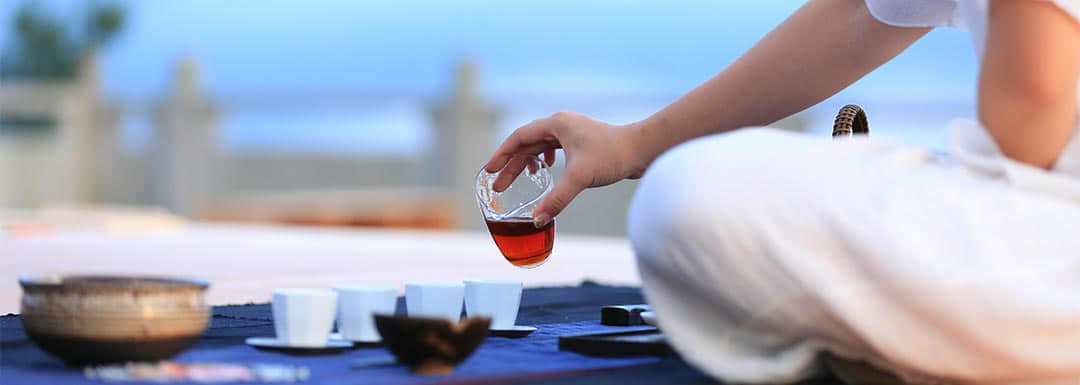
You already know how to prepare a quick 'cuppa' for yourself. Well, you just put a teabag in your cup and pour boiling water over it. Obviously, if this is all that you have been doing, you may have been missing out on a great deal.
Tea is so much more than just a hot drink to whip up on a whim. The ritual is different in every culture, but there is always a ritual. In China, where tea originated, there are several rather nice ceremonies which help people to get together and share a social, or even spiritual, moment over a delicious drink.
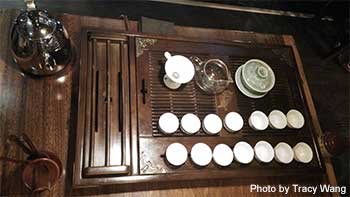 Tea Set
Tea Set
To make and serve tea, you will need some special equipment such as a tea set, or maybe a just a gaiwan.
The gaiwan, or zhong, is a Chinese lidded bowl used for brewing and then drinking tea. Invented during the Ming dynasty (1368 - 1644 CE), it consists of a bowl with a lid and a saucer. While it can be used for any type of tea, it is particularly useful for preparing teas with delicate flavors and aromas such as green tea and white tea, and for teas that can be infused several times, such as oolong tea.
Using the gaiwan, tea leaves are placed in the bowl, about ¼ full, and hot water is added to rinse the leaves which immediately start to unfurl. The water is discarded, using the lid to hold back the leaves in the bowl. Fresh hot water is added, and the tea steeps for up to 20 seconds.
Being careful because obviously the tea will be hot, you hold the saucer in your right hand, with your thumb resting on the edge of the bowl. With your left hand you hold the lid to push away the tea leaves before you drink. It is certainly more elegant than slurping out of your mug of tea.
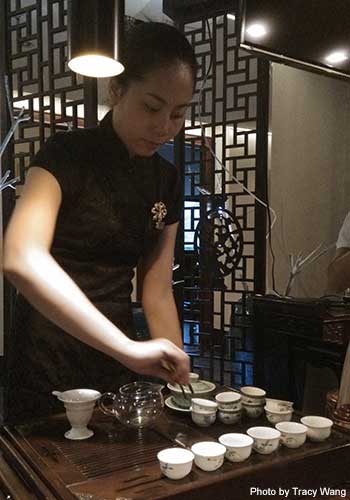 Tea Ceremony
Tea Ceremony
But the real skill, and art, lies in using the Chinese tea set, and performing the Gongfu tea ceremony. The tea set for this time honored tradition consists of: a teapot, a tea strainer, a kettle, a tea pitcher, a brewing tray which allows spilt water to be drained away, a deep plate or bowl, fresh water, some loose leaf tea leaves, a tea scoop or pick, a tea caddy, a pair of tongs, a tea towel, some small aroma cups, and some tasting tea cups - small without handles. The small teapot is often made of special Yixing clay, or else porcelain. The cups are usually white porcelain, giving a clear view of the beautiful color of the tea.
Your set may also include one or more small clay 'tea pets', as part of good Feng Shui, and ensuring good luck. It's a nice idea to prepare your room and have some nice incense burning. Also think about the water you are using. Your tap water may be fine if it is not too hard or too soft, but spring water is recommended. Using distilled water is not advisable, but bottled water is fine.
There are many slight variations to the exact sequence of the tea ceremony, but here is the basic process.
- Warm the tea set by placing the tea pot and cups into the bowl, and pouring hot water over them. Use the tongs to remove the teapot and cups.
- Allow your guests to appreciate the tea by passing it around, maybe on a small plate, for them to examine.
- Put some tea leaves into the tea pot. The amount of tea will depend on the type, as the leaves will increase in volume once the water causes them to unfurl. One teaspoonful of tea leaves for each 6 ounces (170ml) of water is suggested.
- Heat your water to the correct temperature for your chosen tea type. For white and green tea it should be up to 85°C (185°F), for oolong it can be 85°C (185°F) up to boiling, for black tea it should be almost boiling 99°C (210°F), and Pu'er tea needs boiling water 100°C (212°F).
- Holding the kettle at about your shoulder height, pour hot water into the teapot, allowing it to spill out slightly. Use the lid to scrape off the bubbles and gently close it.
- Take this first steep and pour it over your tea pet, and/or discard it into the tray. Some people will pour this first tea into the cups, and then discard it.
- Again pour hot water into the teapot, filling it right up. This time pour it into the pitcher, and then, in one continuous pour, into the small aroma cups. Some people like to share the last bit between the cups drop by drop.
- Put the tasting cups over the aroma cups, then holding them carefully, flip each one over. Hand each guest a teacup with the aroma cup sitting upside down inside it.
- Each guest should lift the aroma cup, hold it with two hands, and raise it to their nose to enjoy the intensified aroma of the tea.
- Now the guests each take three sips from the tasting cup. The first is a tiny sip, and roll the liquid around in their mouth. The second is a longer sip. The final sip is to enjoy the aftertaste. Any remaining tea is tipped into the tray.
- The process is then repeated several times, adding more water into the teapot and noticing the changes in taste and aroma.
Once you have successfully negotiated the tea ceremony, remember to thank your guests for their participation.

OR
Are you eager to begin your Chinese cultural journey?
Drop us a line and we will promptly connect you with our leading China expert!
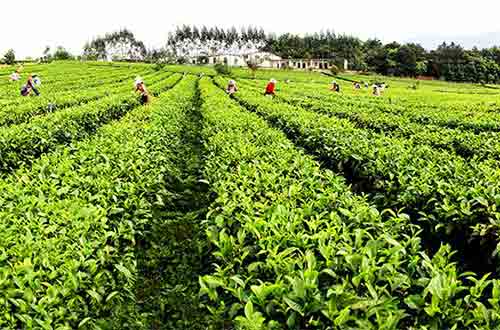 Chinese Tea
Chinese Tea 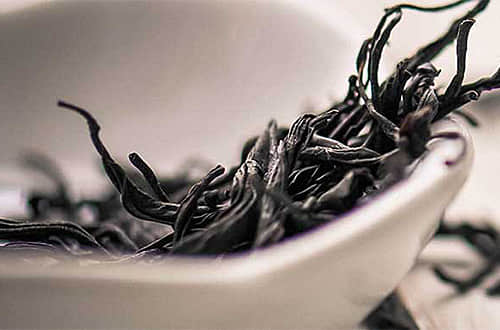 The History of Chinese Tea
The History of Chinese Tea 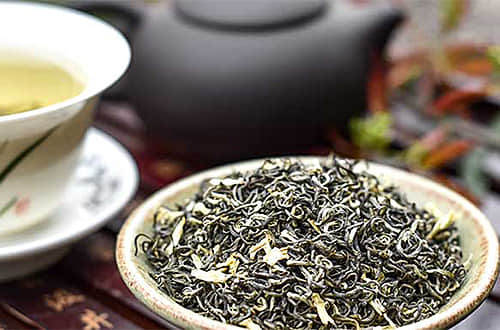 Types of Chinese Tea
Types of Chinese Tea 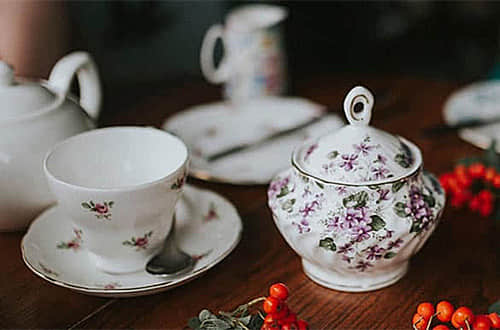 Chinese Tea in Western Countries
Chinese Tea in Western Countries